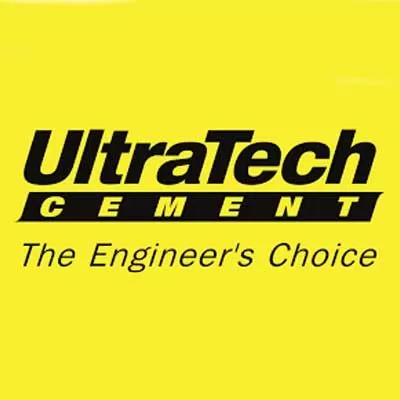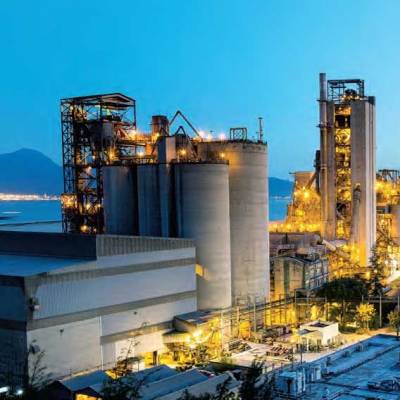- Home
- Building Material
- Cement
- Light Strength

Light Strength
<span style="font-weight: bold;">Semi-lightweight wood ash concrete is advantageous for low-cost buildings. Know how!</span><br /> During the Indus Valley Civilisation as early as 3000 BC, the towns of Harappa and Mohenjo-Daro were built using lightweight aggregate concrete (LWAC). In Europe, 2,000 years ago, the Romans built the Pantheon, the aqueducts and the Colosseum using LWAC (Source: From the book of Satish Chandra and Leif Berntsson, Sweden). In fact, lightweight concrete was first patented in 1923 mainly for use as an insulating concrete. With increasing demand and the non-availability of natural lightweight aggregates, factories and industries have been seriously involved in the production of artificial lightweight aggregates. <p></p> <p>The rapid depletion of natural resources has increased demand for renewable resources. Utilisation of wastes emitted from various factories and industries has been increasing by the day. Biomass such as wood barks, wood chips and sawdust is a good source of renewable energy. These wastes are commonly used as fuel to generate heat energy. However, the combustion of these wood wastes produces an enormous amount of ash. Wood ash is a tamarind bark combustion product composed of fine particles that falls in the bottom of the modern rice mill dryers (see Fig 1), which creates adverse problems as it can easily spread in the air owing to its fineness, causing health issues for living beings. Further, it needs a separate land space to be dumped and contaminates groundwater by leaching toxic elements.</p> <p> <span style="font-weight: bold;">Using wood ash as an aggregate</span><br /> Limestone plays a significant role in the production of cement. This sedimentary rock is composed mainly of skeletal fragments of marine organisms such as coral, forams and molluscs. Its major materials are the minerals calcite and aragonite, which are different crystal forms of calcium carbonate (CaCO3). Wood ash (especially, by tamarind bark combustion) contains high CaCO3 content. Hence, an attempt has been made to utilise this treasure in the area of concrete production. The applications of wood ash in concrete include cement replacement, filler. </p> <p>Then, from a novel perspective, we thought, why can't we use it in the form of aggregate? After a lot of trials and experimentation, we finally made coarse aggregate by using wood ash as a main ingredient using pelletisation techniques.</p> <p> <span style="font-weight: bold;">Supporting materials </span><br /> The wood ash (shown in Fig 1) was collected and further processed in two stages: Sieving and ball milling. At the first stage, the wood ash material was sieved in a 2.36-mm sieve to eliminate unburned coal pieces and unwanted waste present in it. Then, the material was crushed in the ball mill for 20 minutes at the second stage. </p> <p>The fine wood ash powder is shown in Fig 2. Basically, wood ash is an organic material used as a fertiliser owing to the presence of potash and calcium. In this present research, semi-lightweight concrete has been prepared by using lightweight wood ash pellets (WAP) (see Fig 3) as a coarse aggregate, which has bulk density in the range of 1,000-1,150 kg per cu m.</p> <p> <span style="font-weight: bold;">Mix proportion</span><br /> Optimised mix design for semi-lightweight concrete using artificially made pellets is a complicated task owing to its high water absorption capacity and porosity. After attempting several trial mixes in the laboratory, the final design mix proportion with a minimum cement content of 300 kg per cu m is shown below. </p> <p><span style="font-weight: bold;">Cement: </span>300 kg per cu m<br /> <span style="font-weight: bold;">Wood ash pellets:</span> 622.155 kg per cu m<br /> <span style="font-weight: bold;">Sand:</span> 1174.02 kg per cu m<br /> <span style="font-weight: bold;">Water: </span>187 kg per cu m<br /> <span style="font-weight: bold;">Super plasticiser:</span> 4.5 kg per cu m.</p> <p> <span style="font-weight: bold;">How does it work?</span><br /> The density of concrete specimens (see Fig 4) for the above designed mix proportion is between 2,000 kg per cu m to 2,200 kg per cu m. With a compressive strength of 23 to 25 MPa on the 28th day, water curing, which was achieved by 100 per cent utilisation of waste materials (wood ash aggregates) in concrete (see Fig 5), is equivalent to that of typical M20 grade conventional cement concrete.</p> <p> The presence of alkalinity was identified by applying a phenolphthalein indicator on a fractured specimen; it turned pink compared to conventional concrete, which remains colourless (see Fig 6a and 6b). It should act as a protective layer on reinforcement against external affects like corrosion, etc.</p> <p> WAP acts as an internal curing regime. Therefore, the internal microstructure of the concrete was hydrated well, leading to a strong formation of Calcium Silicate Hydrate gel (C-S-H gel), which plays a great role in strength and durability.</p> <p> <span style="font-weight: bold;">Advantages in the Indian scenario</span><br /> </p> <ul> <li>Structural lightweight concrete has better fire-resistance compared to normal weight concrete.</li> <li>There is lower coefficient of thermal expansion.</li> <li>Construction should be fast and easy, needing less manpower.</li> <li>Transportation of material is very reliable.</li> <li> It reduces the self-weight of the structure.</li> <li>Footings and piles are saved owing to significant weight reduction.</li> <li>Cutting, nailing, sawing and drilling of concrete are easier than normal and heavyweight concrete.</li> <li>It can be recommended for earthquake-resistant structures owing to its weight.</li></ul> <p> <span style="font-weight: bold;">Precautions in usage</span><br /> Because of greater water absorption of wood ash pellets, it is highly recommended to test the water absorption of the pellets before employing the design mix, else it will lead to serious reduction in workability and strength of concrete as well as vulnerable plastic shrinkage cracks on the surface of concrete immediately after a few hours of concreting.</p> <p> <span style="font-weight: bold;">Application in building, construction and infrastructure</span><br /> Owing to its lightweight nature, wood ash concrete can be used in lightweight structures and will reduce the overall deadweight of the structure. It has good insulating property and durability. It can be used in insulating panels, precast panels, soundproof walls, roofing panels, compound walls, partition walls, precast bricks and bridge decks. The size of columns, beams and other load-bearing structures may be reduced. It is also suitable for earthquake-prone areas.</p> <p> <span style="font-weight: bold;">Cost and availability</span><br /> Wood ash is abundantly available in saw mills and dryers of modern rice mills free of cost. </p> <p>In fact, semi-lightweight concrete costs Rs 618 per cu m less than conventional concrete. Thus, semi-lightweight wood ash concrete is highly recommended for low-cost buildings.</p> <p> <span style="font-weight: bold;">About the Authors:Dr Karthikeyan Jayakumar i</span>s Assistant Professor, Department of Civil Engineering, NIT-Trichy. He holds a PhD in structural engineering from IIT-Roorkee.</p> <p>Parthiban is a Research Scholar (PhD student), Department of Civil Engineering, NIT-Trichy. </p> <p>He works on 'Semi-light weight wood ash aggregate Concrete' for his PhD Dissertation.</p>



















